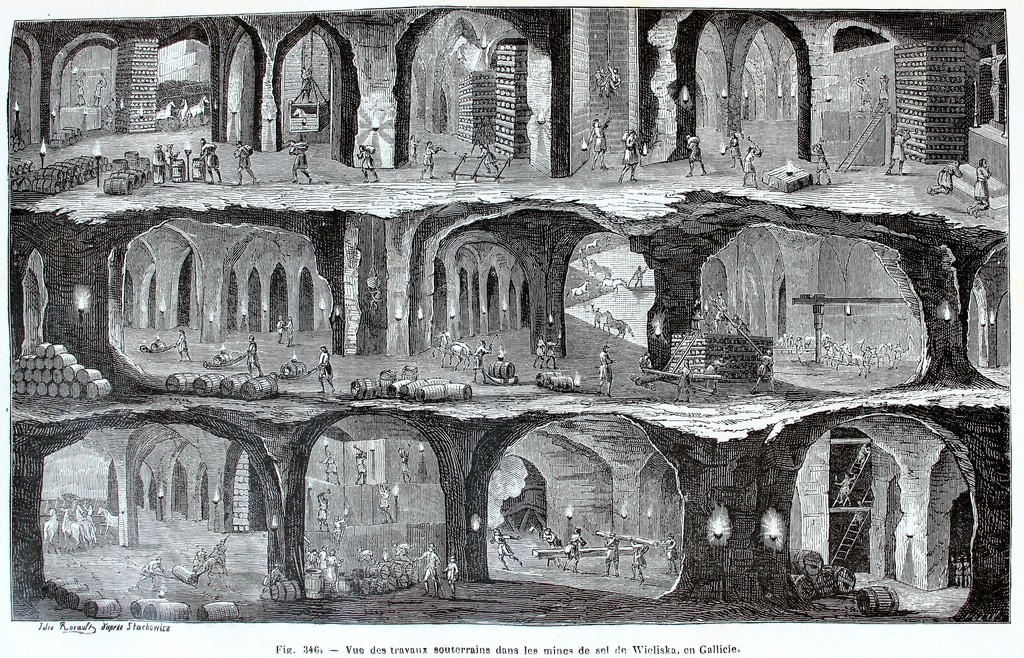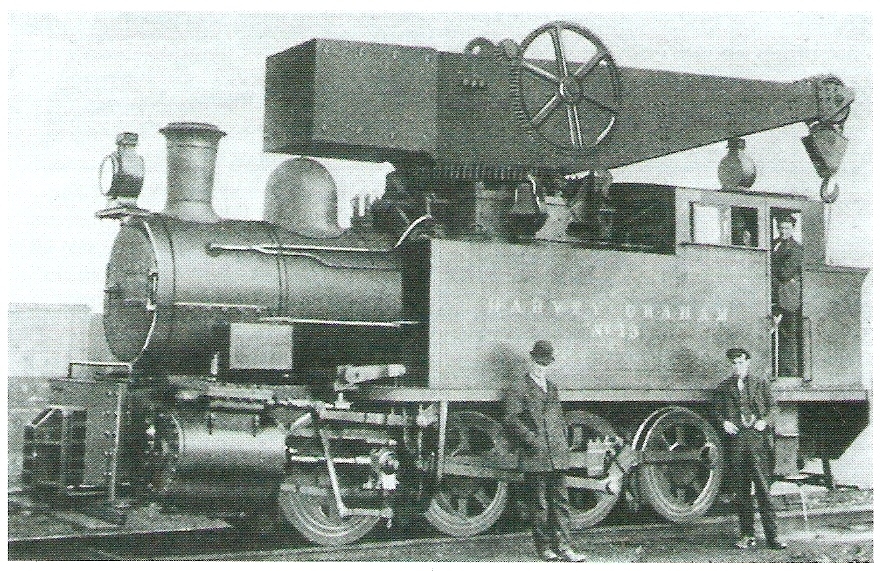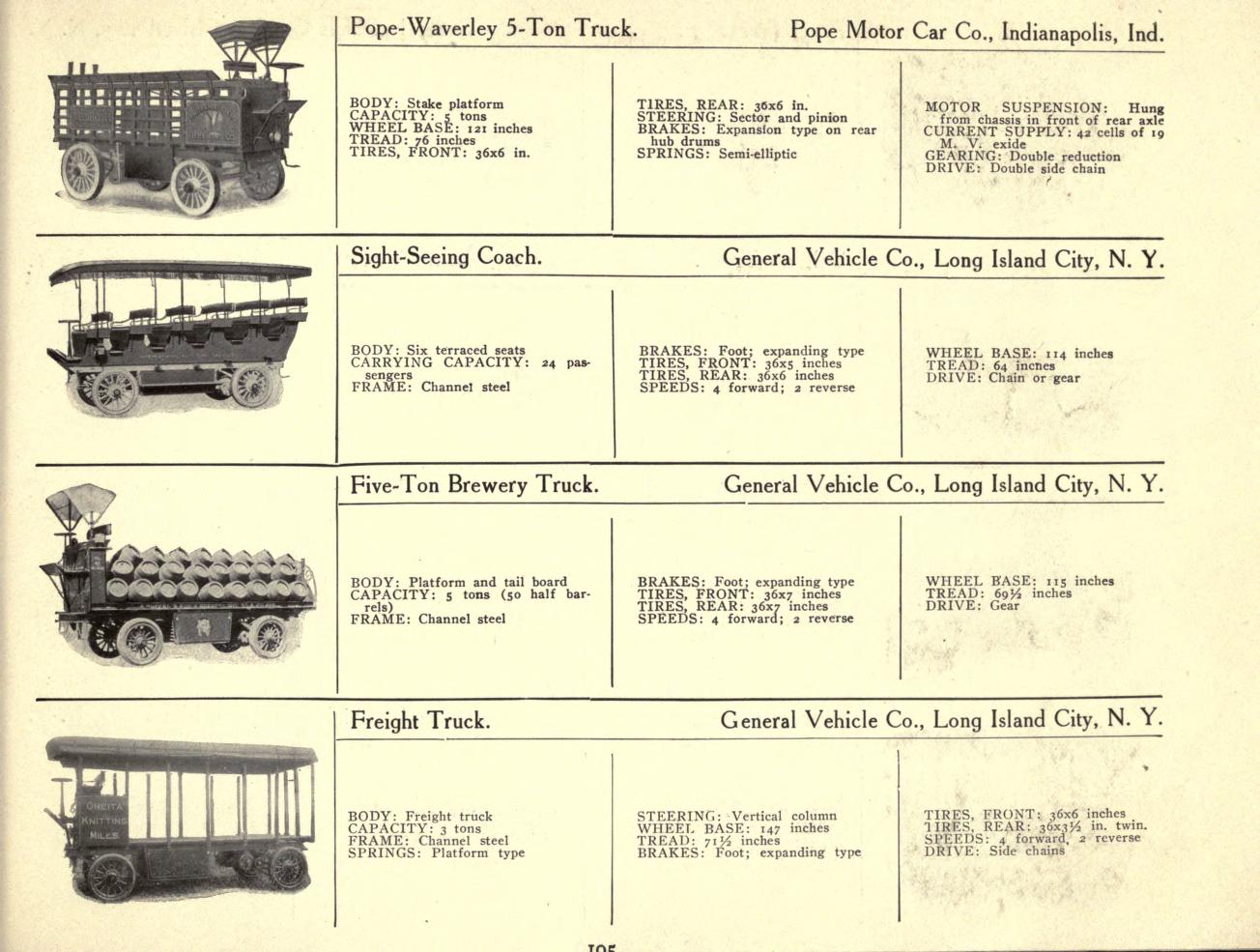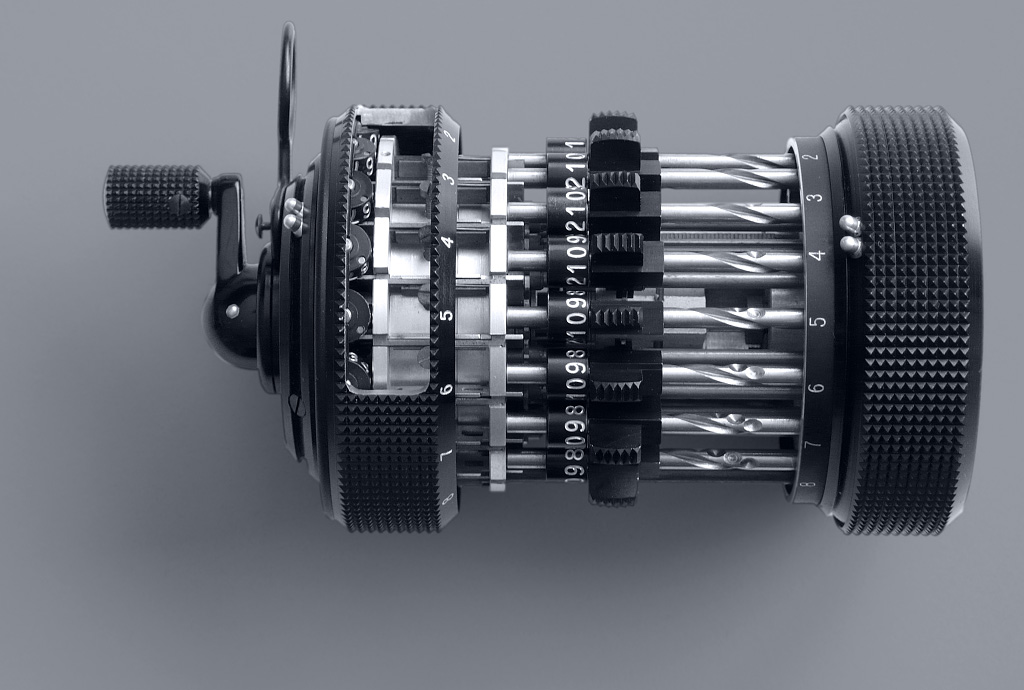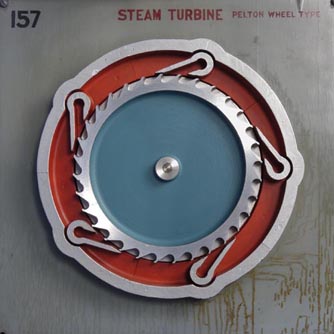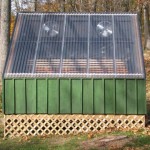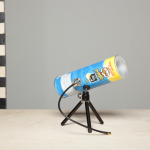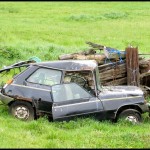“Les merveilles de l’industrie, ou description des principales industries modernes”, Louis Figuier (1873-1877). The 4-volume book is in French, but the engravings are indeed wonderful: Part 1 (750 pages), Part 2 (736 pages), Part 3 (687 pages) & Part 4 (744 pages). A sample of the illustrations of part one and four can be found here and here. Below: salt mines in Wieliska, Poland (extra large illustration). Related: Three thousand pages of 19th century technology.
The Wonders of Industry (1873-1877)
Crane Locomotives
“At the beginning of the 20th century, all essential transport and machine movement, even in the building trade, was by water or rail. This left its marks on the cranes of the day, and a large number of rail-mounted crane structures were utilized – including the rather strange looking ‘crane locomotives’. These were steam locomotives to which a steam crane had been added.”
Quote & picture from “The History of Cranes (The Classic Construction Series)“, Oliver Bachmann (Amazon link). More pictures below.
Overview of Early Electric Trucks (1907 Catalog)
Best Curta Pictures Ever
Curta pictures (thank you, Richard). More information on the device (previously): “Computing without electricity“.
Three Thousand Pages of 19th Century Technology
The “Dictionary of arts, manufactures, and mines containing a clear exposition of their principles and practice” by Andrew Ure (and many others) is a 3,000 page illustrated encyclopedia packed with useful technical and statistical
information relating to industrial development in the nineteenth
century.
The paper version can be yours for a mere € 1,248 (or $ 1,760, including a discount), but the Internet Archive has made the entire seventh edition (published in 1875) available for free: Volume 1 (A-C), Volume 2 (D-I), Volume 3 (J-Z). Some volumes of earlier editions can be found at Google Books.
Illustration on the left: the manufacturing of money (see “Mint”).
Related: The wonders of industry (1873-1877).
Online Multimedia Museum of Machine Motion
Reader Mathew Lippincott (check out his mutoscope) points us to Kinematic Models for design (KMODDL), an open access, multimedia resource for learning & teaching about kinematics and the history & theory of machines.
The core of this wonderful museum is the Reuleaux collection of mechanisms and machines, a set of 19th century models built to demonstrate the elements of machine motion (more collections here). Also of interest are the tutorials and this extensive list of online references.
KMODDL also has 3D-printable models (see the multimedia section) and some of these have stereolithography files. They can be viewed with Meshlab. Thank you, Mathew!
